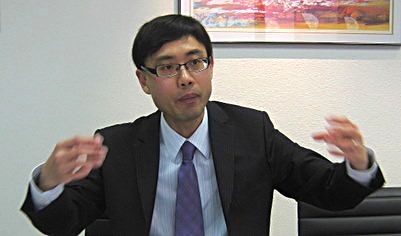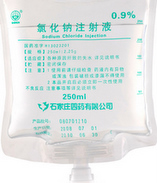
LIJUN INTERNATIONAL Pharmaceutical (Holding) Co Ltd (HK: 2005) saw its top line top 866 mln hkd in the first half of 2009, up from around 846 mln hkd a year ago.
Of this, the Hong Kong-listed firm’s IV infusion products contributed 37% to total revenue.
But a quick look behind the figures reveals that these products made up nearly 60% of its net profit over the period!
Mr. Pierre Sze told NextInsight and Aries Consulting last week that the company hopes to boost growth via enhanced reliance on these higher margin products.
Indeed, Lijun (www.lijun.com.hk) sees this product mix and focus as an Rx for success in an often hypercompetitive and fragmented China marketplace for drugs and medical supplies.
Lijun International wholly owns two units: Shijiazhuang No.4 Pharma and Xi’an Lijun Pharma.
The Xi’an unit operates in the historic western Chinese city and produces it drug products, primarily antibiotics, OTC products and other healthcare products.
Some of the recognizable pharmaceuticals rolling off the lines at this unit include Lijunsha (利君沙), Paiqi (派奇), Dobesilate (多贝斯) and Lixiding (利喜定).
"Newer products in this category are a children’s version of Lijunsha, Cephalosporin antibiotics and Cefepime. We are continuing to strengthen promotion in county level and rural areas across China. Our Lijunsha capsules are also targeting drug stores and hospitals,” Mr. Sze said.
|
||||||||||||||||||||||||||||
However, it is the higher-margin products from the Shijiazhuang unit, based in Hebei province’s capital, that are driving profitability for Lijun.
The company is the largest manufacturer of non-PVC soft bag packaging intravenous (IV) infusion solutions across China.
The northern Chinese unit about a three-hour drive south of Beijing focuses on three products: Plastic (PP) bottle IV fluid packaging, non-PVC soft bag IV fluid packaging, and traditional glass bottle IV fluid packaging.
The pharmaceutical operations enjoyed slightly higher gross margins than the IV packaging solutions products (51% vs 48%), however the latter had much higher net profit margins as category (20% vs 9%).
"This is because our IV solution products use up little to no A&P budget, they enjoy very low distribution costs and we benefit from direct sales to hospitals, thus eliminating the middleman,” Mr. Sze said.
This was allowing executives at Lijun the liberty of optimism when looking to the release of full-year 2009 results, expected around end-March/early-April.
Additionally, some analysts contacted believe revenue could be more than doubled on a year-on-year basis.

Bagging the China IV market
Industry experts will explain that there are essentially three ways to temporarily store IV fluids such as saline solution or a glucose drip mixture.
Mr. Sze elaborated further that glass bottles were the most basic, cheapest and potentially the least safe of the three options.
"In China, most IV packaging still relies on glass bottles. But these are obviously heavier and bulkier options and prone to breakage. Also, they need introductions of ambient air which can easily contaminate the infusion and potentially lead to injury or death for the patient.”
He said China’s No.1 IV infusion packaging firm, unlisted Sichuan Kelun, was primarily focused on the glass bottle storage products, and controlled 20% of China’s total IV infusion packaging market.
"We are third in terms of overall market share in China (behind Sichuan Kelun and Shanghai-listed Double Crane). But glass bottles make up just 30% of our production.”

Lijun had a total market share in China for all IV infusion packaging products of around 8%.
And Lijun’s high quality non-PVC soft bag IV packaging products were catching up with glass, and would someday be the industry standard and most frequent choice among hospitals.
Currently, around 68% of patients in hospitals had glass IV bottles hanging from hooks beside their beds, while 20% used non-PVC soft bags and 12% plastic (PP) bottles.
"The glass bottles will slowly be phased out as health care reforms and rising incomes in China are helping improve hospital practices and glass bottles do not offer a sterile IV fluid delivery process. Our non-PVC soft bags have the highest quality joints (bag-nozzle connections) among domestic manufacturers and health care providers appreciate or attention to safety and detail.
After all, when something goes wrong with medical care delivery, the hospitals are the first to be blamed, so they also want to make sure they are using the safest, most reliable products.”
And Lijun certainly picked the right place to open production lines.
"Chinese are very keen users of IV solutions, even for common colds and flu outbreaks. While the average American uses around a single bag of IV fluid per year, the number is China is around five,” he said.
He said that the pharmaceutical and medical products industry in China was catching up to world standards, and there were increasingly burdensome entry barriers to the sector via “tighter control in IV products and the required high technical expertise for infusion products.”
"Our IV solutions business is among one of the leading players in China and has immense growth potential. A number of infusion solution production lines and logistics operations are in place to further expand operating income.”

